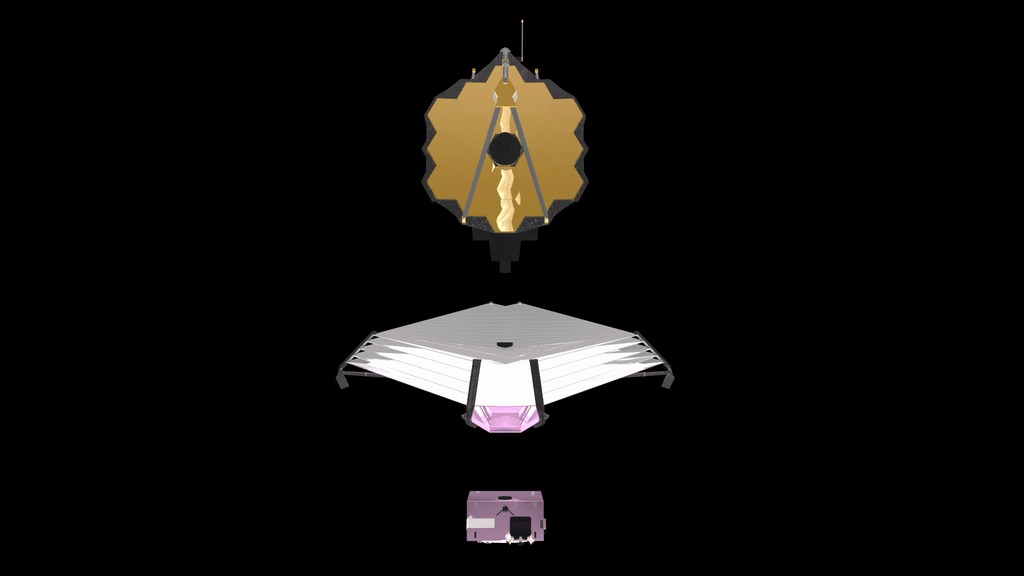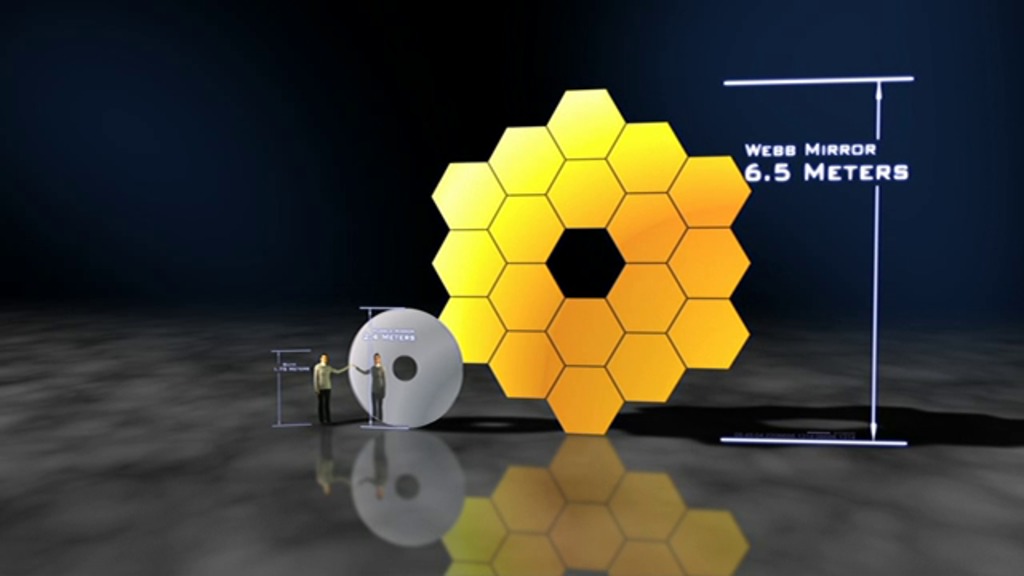James Webb Space Telescope Live Shots - March 30, 2017

B-roll and canned interviews are posted below.
A rare behind-the-scenes look at NASA’s largest and most powerful space telescope
See inside the cleanroom where the James Webb Space Telescope is being built right now
Webb will look further back in time to find the first galaxies that formed in the early universe
The James Webb Space Telescope stands tall in the world’s largest cleanroom at NASA’s Goddard Space Flight Center for the last time. Give your viewers a behind the scenes look at the cleanroom on
Fully assembled, the Webb telescope is as tall as a three-story building. The size of the telescope is significant for the kinds of observations it will make. Webb will find the very first galaxies that formed after the Big Bang, answer fundamental questions about the evolution of our universe, and help in the search for life and habitable planets. Webb’s detectors can record extremely faint signals that will help us study planetary systems around other stars, and maybe even determine if any of the seven recently discovered Earth-sized planets orbiting the nearby TRAPPIST-1 star could support life.
After rigorous testing at NASA Goddard, the Webb telescope is one step closer to launch. Engineers spent months testing space hardware in vibration and acoustics test facilities to ensure Webb will withstand the ride into space. Next, the Webb telescope will ship to NASA's Johnson Space Center in Houston for another important space environment test.
Launching in 2018, the premiere space observatory will fold origami-style into an Ariane 5 rocket and deploy like a transformer once in space. Webb will travel nearly 1 million miles away from Earth to its home orbit at the second Lagrange point, or L2.
To Book a Window
Contact Clare Skelly – clare.a.skelly@nasa.gov / (301) 286-4994 office
Suggested questions:
1. What is the James Webb Space Telescope and how is it different from the Hubble Space Telescope?
2. Once it launches, the Webb telescope will travel a million miles away from Earth. How do you know it will work so far away?
3. Webb is the largest space telescope ever built. How do you build and test a three story tall telescope on Earth for what it will encounter in a very different environment in space?
4. NASA recently discovered seven Earth-sized planets orbiting a nearby star. Will Webb study these to determine if they can support life?
5. Where can we learn more?
Location: NASA’s Goddard Space Flight Center / Greenbelt, Maryland
Interviews with:
Eric Smith / James Webb Space Telescope Program Director and Program Scientist
Bill Ochs / James Webb Space Telescope Project Manager
Amber Straughn / James Webb Space Telescope Science Communications Deputy Project
Scientist
Jane Rigby / James Webb Space Telescope Deputy Project Scientist for Operations
Begoña Vila [Spanish speaker] / James Webb Space Telescope Instrument Systems Engineer
Video: NASA will roll all insert videos during live interviews. If needed, stations can roll on a clean feed of all video at 5:45 a.m. ET on Thursday, March 30, at the above listed satellite coordinates.
jwst.nasa.gov
On Twitter: @NASAWebb
B-roll for questions 1-4
Additional graphics for James Webb Space Telescope interviews
Canned interview with Dr. Eric Smith looking off camera. Soundbites are separated with slates. Full transcript is included
Canned interview with Dr. Eric Smith facing the camera. Soundbites are separated with a slate. Also includes transcript
Canned interview in Spanish with Dr. Begonia Vila.
Bill Ochs, JWST Project Manager
Video of the James Webb Space Telescope inside the cleanroom on Thursday 3.30.17. First two shots pan right to the telescope. Last shot is a static show of the backside of the telescope
For More Information
See the following sources:
Credits
Please give credit for this item to:
NASA's Goddard Space Flight Center
-
Producers
- Clare Skelly (NASA/GSFC)
- Michelle Handleman (USRA)
-
Editor
- Sophia Roberts (Advocates in Manpower Management, Inc.)
Release date
This page was originally published on Tuesday, March 21, 2017.
This page was last updated on Wednesday, May 3, 2023 at 1:47 PM EDT.


